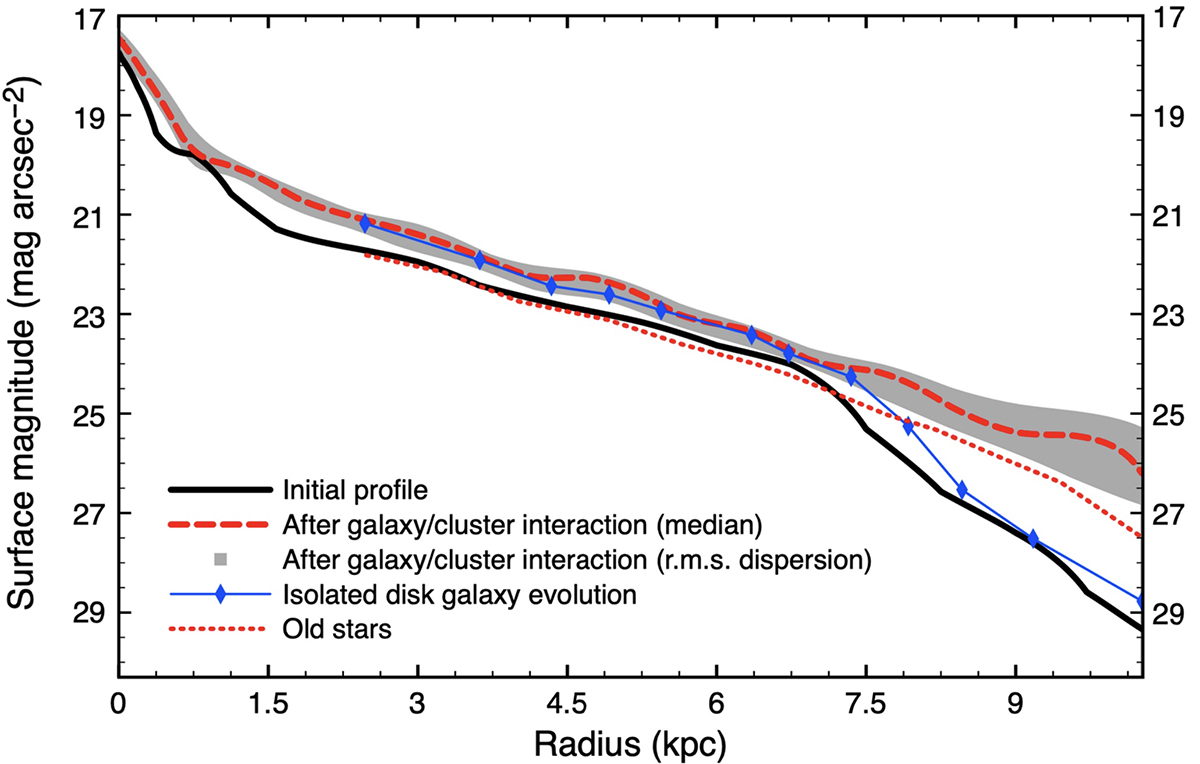Fig. 18.

Download original image
Hydrodynamical simulations of the interaction of a Type II galaxy with a Perseus-like cluster. The initial disc galaxy (solid black curve) has a double exponential, Type II radial profile, and a central bulge, formed by disc instabilities at high redshift, with a break at 6.5 kpc and a gas fraction of 17% in the disc. These initial conditions are taken from simulations of high-redshift disc instabilities and Type II profile formation in Bournaud et al. (2007). Simulations (Paper II) evolve this disc galaxy in the tidal field of the Perseus-like cluster for about one cluster crossing time. The median profile over six simulated orbits (red dashed curve) and the RMS dispersion (shaded area) are displayed, showing that the galaxy evolves most of the time towards a Type I disc, while the same galaxy in isolation during the same timescale would remain Type II (thin blue line with diamonds). Stars pre-existing to the galaxy/cluster interaction (red dotted line) are scattered radially over increasingly eccentric orbit, accounting for about two thirds of the replenishment of the outer disc beyond the initial break radius, the other third coming from the triggering of turbulence, shocks, and star formation in the outer disc by the tidal field of the cluster (see Paper II for individual orbits and detailed interpretation).
Current usage metrics show cumulative count of Article Views (full-text article views including HTML views, PDF and ePub downloads, according to the available data) and Abstracts Views on Vision4Press platform.
Data correspond to usage on the plateform after 2015. The current usage metrics is available 48-96 hours after online publication and is updated daily on week days.
Initial download of the metrics may take a while.


